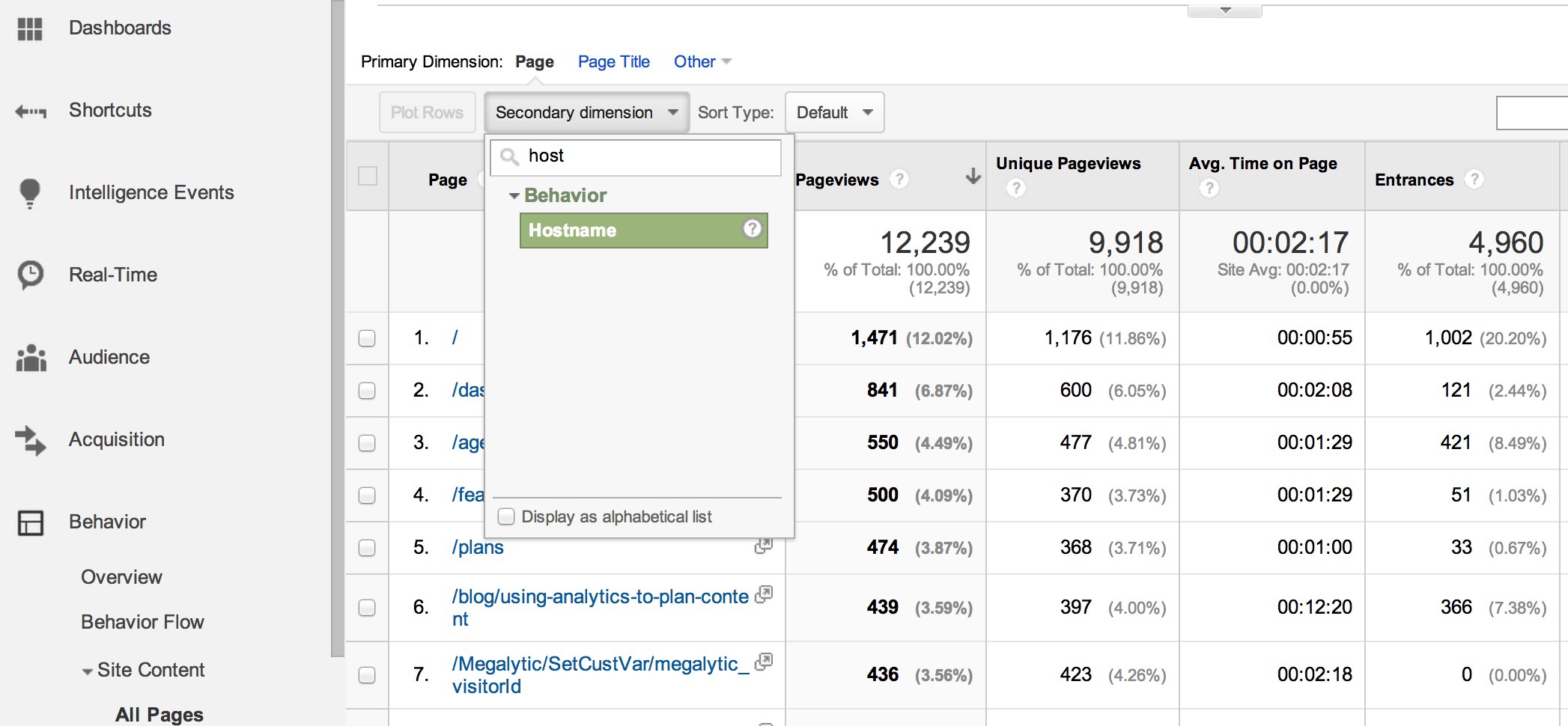Opening the Power of Additional Dimension Analytics for Enhanced Information Insights and Decision-Making
In the world of information analytics, key dimensions often take the limelight, however the true deepness of understandings lies within the realm of secondary measurements. By harnessing the power of additional measurement analytics, companies can unveil concealed trends, reveal relationships, and remove more significant final thoughts from their information.
Value of Second Measurements
Discovering the value of additional dimensions in analytics unveils the hidden layers of information insights vital for notified decision-making in numerous domain names. Secondary measurements offer a much deeper understanding of key information by providing additional context and point of views. By including second measurements right into analytics, organizations can extract more nuanced and detailed understandings from their datasets.
One secret significance of second dimensions is their capability to section and categorize main information, permitting a much more in-depth analysis of particular parts within a dataset. When looking at the data as a whole, this segmentation allows companies to recognize patterns, trends, and outliers that could not be obvious. Additionally, secondary measurements assist in discovering correlations and reliances between various variables, resulting in even more exact forecasting and anticipating modeling.
Moreover, secondary dimensions play an essential role in improving information visualization and reporting. By including secondary measurements to visualizations, such as charts or graphs, analysts can produce a lot more informative and helpful depictions of information, promoting much better interaction of findings to stakeholders. Generally, the assimilation of secondary dimensions in analytics contributes in unlocking the complete potential of information and driving evidence-based decision-making.
Key Advantages of Using Second Measurements
Utilizing second dimensions in analytics provides companies a tactical advantage by increasing the deepness and granularity of data understandings. One essential benefit of integrating second measurements is the ability to segment and filter data, enabling for a much more in-depth analysis of specific facets within a dataset. This segmentation allows organizations to obtain a much more nuanced understanding of their audience, efficiency metrics, and various other vital data points. By dissecting data utilizing second dimensions such as time, place, device type, or user demographics, organizations can uncover patterns, patterns, and relationships that might otherwise stay surprise.
In addition, the usage of additional dimensions boosts the context in which primary data is interpreted. It offers a much more detailed sight of the relationships between various variables, allowing companies to make informed decisions based upon a much more alternative understanding of their information. Furthermore, second measurements promote the identification of outliers, abnormalities, and areas for optimization, inevitably leading to much more efficient approaches and boosted outcomes. By leveraging second measurements in analytics, organizations can harness the full possibility of their data to drive better decision-making and attain their company purposes.
Advanced Data Evaluation Strategies
A deep dive into sophisticated data analysis techniques exposes advanced techniques for removing beneficial understandings from complex datasets. One such strategy is machine understanding, where algorithms are employed to identify patterns within data, predict outcomes, and make data-driven decisions. This method enables for the automation of analytical version structure, allowing the handling of huge volumes check my reference of data at a much faster speed than conventional approaches.
An additional sophisticated strategy is anticipating analytics, which utilizes analytical algorithms and artificial intelligence methods to forecast future outcomes based on historical information. By analyzing trends and patterns, organizations can prepare for consumer habits, market fads, and prospective dangers, encouraging them to make proactive decisions.
Moreover, text mining and sentiment evaluation are valuable techniques for drawing out understandings from disorganized data resources such as social media sites remarks, consumer testimonials, and survey reactions. additional hints By examining message information, organizations can recognize customer point of views, recognize emerging patterns, and improve their product and services based on comments.
Enhancing Decision-Making Via Additional Dimensions

Enhancing decision-making via second dimensions enables services to make even more educated and targeted critical selections. As an example, by segmenting client data based on second measurements like acquiring history or interaction levels, companies can customize their marketing strategies to certain audience sectors, resulting in improved conversion rates and customer satisfaction. Additionally, second measurements can help identify connections and connections in between different variables, enabling organizations to make data-driven choices that drive growth and earnings.
Carrying Out Additional Measurement Analytics
When integrating second dimensions in analytics, organizations can unlock deeper understandings that drive tactical decision-making and boost general performance. This involves comprehending the certain concerns the organization seeks to answer and the information points called for to resolve them.

In addition, organizations need to take advantage of progressed analytics tools and technologies to simplify the procedure of including additional dimensions. These tools can automate data processing, analysis, and visualization, allowing companies to concentrate on analyzing understandings as opposed to manual data control.
Final Thought
In final thought, second dimension analytics play a vital duty in improving information insights and decision-making procedures. By using advanced data evaluation methods and implementing additional measurements efficiently, organizations can open the power of their data to drive calculated company choices. The crucial benefits of using additional measurements can not be overemphasized, as they offer a much deeper understanding of information trends and partnerships. It is essential for organizations to utilize additional dimension analytics to remain affordable in today's data-driven landscape.
In the world of information analytics, main dimensions typically take the limelight, but the true deepness of insights lies within the world of additional measurements.Making use of additional dimensions in analytics offers organizations a tactical benefit by enhancing the depth and granularity of data understandings. By leveraging additional measurements in analytics, organizations can harness the complete capacity of their data to drive much better decision-making and achieve their company objectives.
Executing data recognition processes and routine audits can assist maintain data quality and dependability.
By using sophisticated data evaluation methods and implementing secondary measurements effectively, companies can unlock the power of their information to drive critical organization decisions.